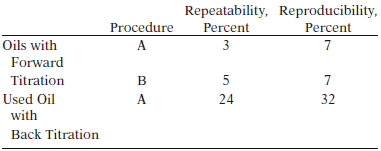(Equivalent Test Methods: IP 276, ISO 3771, and JIS K 2501)
For many materials the results obtained by this test method will be similar to those obtained by Test Method D664. With certain compounds such as strongly over-based oil additives and nitrogenous polymeric compounds, higher results may be obtained. The consitutents that may be considered to have basic characteristics include organic and inorganic bases, amino compounds, salts of weak acids (soaps), basic salts of polyacidic bases, and salts of heavy metals. This test method is applicable to both fresh oils and used oils.
TEST SUMMARY
The sample is dissolved in an essentially anhydrous mixture of chlorobenzene and glacial acetic acid and titrated with a solution of perchloric acid in glacial acetic acid with a potentiometric titrimeter. A glass indicating electrode and a calomel reference electrode are used, the latter being connected with the sample solution by means of a salt bridge. The meter readings are plotted against the respective volumes of titrating solution, and the end point is taken at the inflection in the resulting curve.
Occasionally certain used oils give no inflection in the standard titration, in which case a back titration modification with sodium acetate titrant is employed.
TEST PRECISION

NOTES ABOUT BASE NUMBER TEST
There has been concern around the world due to the use of the halogenated solvent used in this test. Attempts have been made to replace chloroform or chlorobenzene with trichloroethane, toluene, xylene, DMSO, and other solvents. To date, the results have been mixed. However, it is to be expected that some time in the future, ASTM will drop the use of halogenated solvent from this test. In one case procedure A was used with mixed xylenes instead of chlorobenzene, and alternate titration solvent (1:2 glacial acetic acid and mixed xylenes). This resulted in a repeatability of 6.2 %, and reproducibility of 16.2 %, both cases worse than in original D2896. Addition of ~10 % acetone to alternative titration solvent reduces electrode noise. However, precision of this modification is not known.